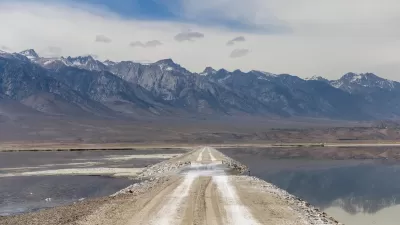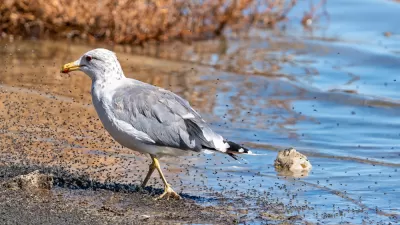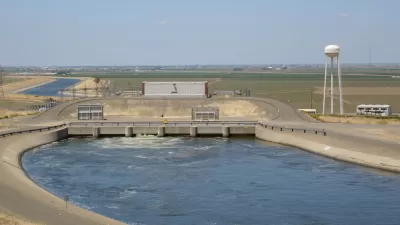After years of feud between Los Angeles and the Great Basin Unified Air Pollution Control District, a more sustainable deal has been reached to eradicate the toxic dust storms plaguing Owens Valley.
Ever since the early 1900s, Los Angeles has been trying to find water to quench the thirst of the growing metropolis. In 1913, Owens Lake, a now-dry lake between the Sierra Nevada and Inyo Mountains, was the source of Los Angeles' early aqueduct to supply water. That only lasted until the mid-1920's, when the lake dried up and began causing toxic dust storms in the region.
According to a Los Angeles Times article by Louis Sahagun, for years due to liability from the Clean Air Act, the Los Angeles Department of Water and Power, "has flooded most of the 110-square-mile lake bed to prevent choking dust storms in the valley that left residents suffering from asthma and other respiratory ailments."
Now, the new method uses "tractors to turn moist lake bed clay into furrows and basketball-sized clods of dirt. The clods will bottle up the dust for years before breaking down, at which point the process will be repeated. The method was first tested in the early 1990s, then tabled out of concern the furrows and clods would disintegrate after a few rains. Two years ago, the DWP resurrected the idea and tested it on several acres of lake bed, but on a much larger scale, with furrows 2 to 3 feet deep. The results showed promise, provided the treated area has clay soil and flooding infrastructure in place."
The new method will go in place in December this year and save about three billion gallons of water in the first year and ten billion gallons three years after that. In addition, this new method will only cost "DWP customers about $1 million per square mile — three times less than shallow flooding. The cost of reducing dust with gravel, which has been applied to swaths of the lake bed, is about $25 million per square mile, officials said."
FULL STORY: New dust-busting method ends L.A.'s longtime feud with Owens Valley

Study: Maui’s Plan to Convert Vacation Rentals to Long-Term Housing Could Cause Nearly $1 Billion Economic Loss
The plan would reduce visitor accommodation by 25,% resulting in 1,900 jobs lost.

North Texas Transit Leaders Tout Benefits of TOD for Growing Region
At a summit focused on transit-oriented development, policymakers discussed how North Texas’ expanded light rail system can serve as a tool for economic growth.

Why Should We Subsidize Public Transportation?
Many public transit agencies face financial stress due to rising costs, declining fare revenue, and declining subsidies. Transit advocates must provide a strong business case for increasing public transit funding.

How to Make US Trains Faster
Changes to boarding platforms and a switch to electric trains could improve U.S. passenger rail service without the added cost of high-speed rail.

Columbia’s Revitalized ‘Loop’ Is a Hub for Local Entrepreneurs
A focus on small businesses is helping a commercial corridor in Columbia, Missouri thrive.

Invasive Insect Threatens Minnesota’s Ash Forests
The Emerald Ash Borer is a rapidly spreading invasive pest threatening Minnesota’s ash trees, and homeowners are encouraged to plant diverse replacement species, avoid moving ash firewood, and monitor for signs of infestation.
Urban Design for Planners 1: Software Tools
This six-course series explores essential urban design concepts using open source software and equips planners with the tools they need to participate fully in the urban design process.
Planning for Universal Design
Learn the tools for implementing Universal Design in planning regulations.
City of Santa Clarita
Ascent Environmental
Institute for Housing and Urban Development Studies (IHS)
City of Grandview
Harvard GSD Executive Education
Toledo-Lucas County Plan Commissions
Salt Lake City
NYU Wagner Graduate School of Public Service





























